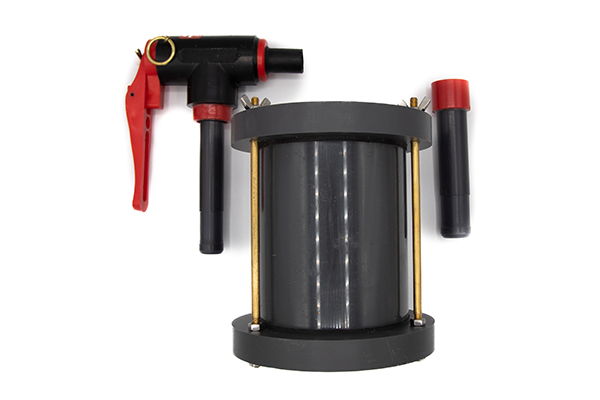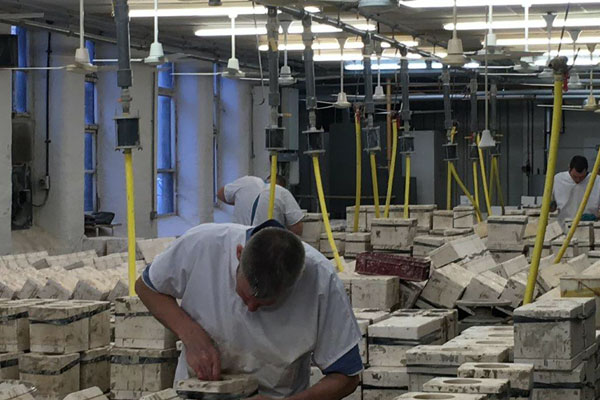
Our slip-casting taps and associated equipment are renowned for improving efficiency and quality in the manufacturing process.
Our range of filters and sieves ensure that slip is maintained at the optimum quality and texture.
Slip Casting Taps allow controllable slip flow and have been used for more than 25 years in the porcelain, china, earthenware and sanitaryware sectors. They are available in 3 sizes:
We also have an LV32 model for large volume sanitary-ware applications.
Spare parts are available for all models. For details of the slip taps and these spare parts, please click on the downloadable pdf.
Tricoflex Casting Tube is available in ¾” and 1” bore in lengths of 25 and 50 metres.
Slip Trailers are rubber balls, attached to a line and a nozzle, that contain slip. When the ball is squeezed, the slip flows through the nozzle and is released onto the ware to create a raised pattern.
Sieves: we offer a supreme range of sieves, which are available with metal or plastic frames and are available in various shapes, sizes and mesh sizes.
We also offer a sieve re-meshing service. So if you require a sieve to be repaired then send it to us, along with the mesh specification, and we shall re-mesh it and return it to you.
In-line Slip Filters are placed in the line to filter out unwanted pieces/lumps in the slip before it reaches the Slip Tap.
In-line Slip Filter Explanation
The photos show the in-line slip filter in use in a factory.
Firstly, the clay is mixed in the blunger, including the soda ash and sodium silicate to produce the correct mix.
When the pint weight and viscosity is correct, the mixture is pumped through an 80s Lawn and magnet and then put into 3 different arcs for the various days’ production.
The Diaphragm pumps by the arcs which then pumps the slip around the 2” pipe work to the casting pipe stations.
The top 2” ball valve is used to stop the flow of slip into the down pipe, where you can also see a second 1” ball valve above in-line filter. This valve can be used to stop or regulate the flow into the casting gun.
Our advice is to insert plenty of flanges into the above pipework, so that if any blockages occur, the pipework can be taken down in sections.

Plenty of brackets should be used to support the system, so that the pipework does not sag due to the amount of weight that is in the system, otherwise this will cause you problems at the pump.
You will note that the slip supply is switched off at the pump at the end of the day’s production and that’s how the system is used.
Production commences the next day by running a small amount of slip through the taps.
There is a section of the pipe located below the 2” ball valve that can be unscrewed. You can then run water through the nozzle on the casting gun back through that section of pipe.
The in-line filter can be disassembled very easily, to give the system a thorough cleaning. The tap also comes apart very easily for cleaning and for new parts to be fitted.
The system needs to be completely cleaned out at least twice a year.
Please click on this downloadable pdf to view testimonial from one of our major customers.